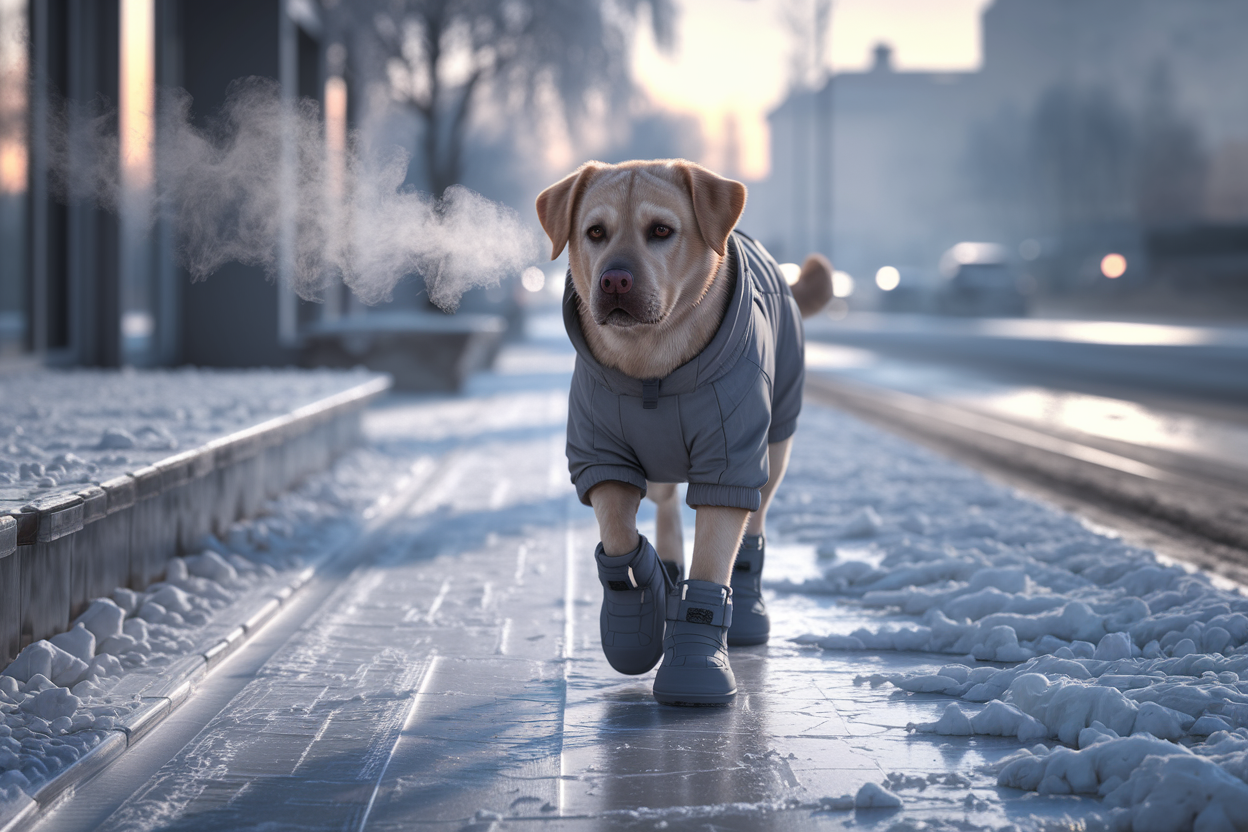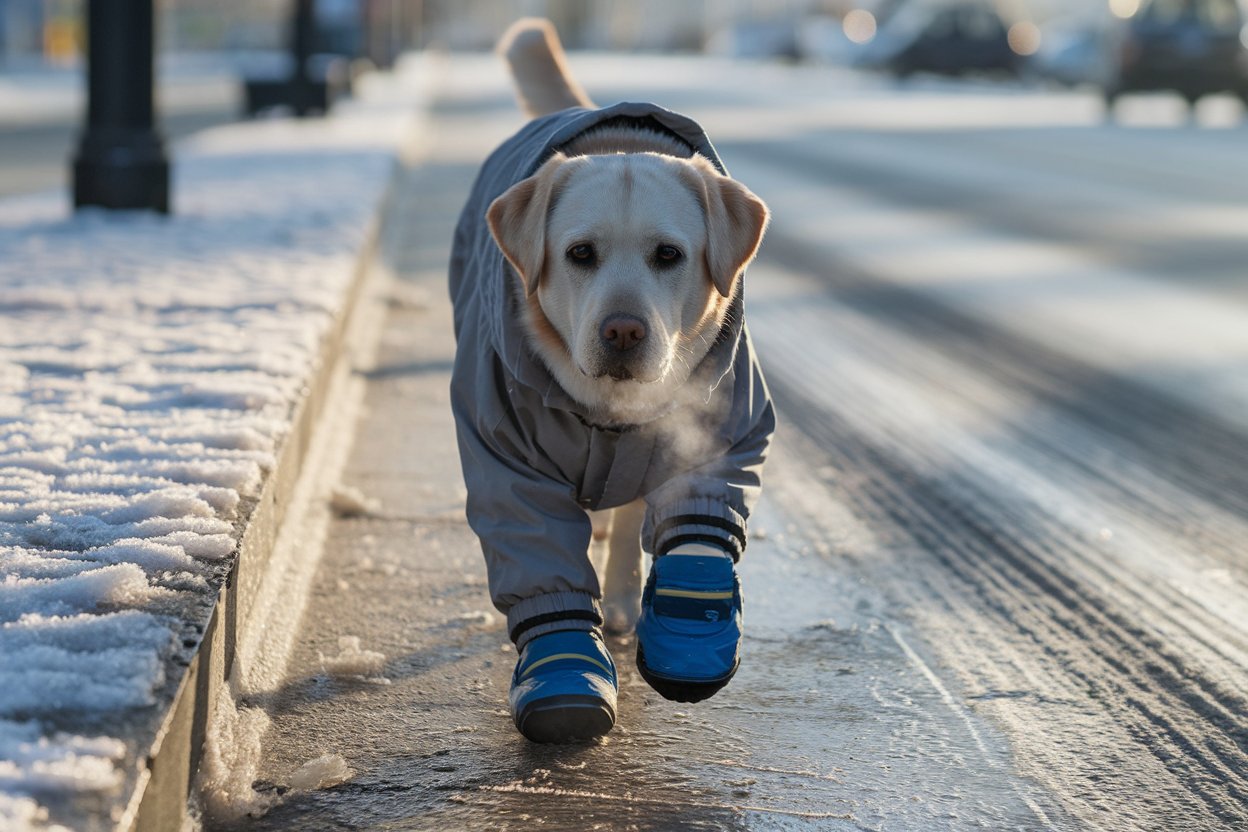
Pets love the outdoors, but rough terrain, hot asphalt, or icy roads can hurt their paws1. It’s a problem many pet owners don’t think about until it’s too late.
Pet shoes protect paws from injuries, weather conditions, and harmful surfaces, ensuring your pet stays comfortable outdoors.
Let me explain why vets recommend dog shoes, how to use them properly, and some alternatives you might consider.
What do vets think of dog shoes?
Many pet owners wonder: Do vets really think dog shoes are necessary?
Vets agree that dog shoes are essential for extreme weather, rough surfaces, and dogs with sensitive paws or injuries.

Why do vets recommend them?
Vets often stress that paws are sensitive, just like human feet. Here’s what they say:
- Hot surfaces: Pavement temperatures can reach up to 65°C (150°F) in the summer. Without protection, your dog’s paws can get burnt.
- Cold weather: Snow, ice, and de-icing salts can cause frostbite or irritation. Shoes prevent direct exposure.
- Rough terrains: Hiking trails or city sidewalks have sharp objects, gravel, or glass. Shoes protect paws from cuts and abrasions.
- Health issues: Dogs recovering from injuries or with paw allergies need extra care. Shoes keep wounds clean and protected.
Vets recommend shoes for specific activities or weather—not every walk requires them.
How long can you leave dog boots on all day?
Worried about how long dog boots can stay on?
Dog boots should be worn for short periods—usually 2 to 4 hours—before giving your pet a break.
The importance of breaks
Like humans, dogs need breaks when wearing shoes:
- Comfort first: Extended wear can cause discomfort, rubbing, or sweating.
- Check the paws: Remove boots and check for irritation, moisture, or debris every few hours.
- Rest time: Let paws breathe between uses, especially if your dog wears them frequently.
Tip: If your dog seems agitated or tries to remove the shoes, it’s time for a break.
What is the best dog paw protection for heat?
Hot sidewalks are no joke. What’s the best way to keep paws safe?
Dog shoes with heat-resistant soles are the best protection for paws on hot surfaces.
Options for summer heat
Here are the most effective solutions for hot weather:
| Protection Method | Why It Works |
|---|---|
| Dog shoes with thick soles | Blocks heat transfer from hot pavement |
| Paw wax | Creates a protective, temporary barrier |
| Walking early or late | Avoids the heat of midday |
| Cooling mats for breaks | Helps paws cool down after a hot walk |
Shoes remain the best option because they fully block heat contact.
What can I use instead of dog booties?
Sometimes, you might not have dog shoes on hand. What are the alternatives?
Paw wax or DIY booties made from materials like socks can temporarily protect paws.
Quick alternatives
- Paw wax: A waxy balm that shields paws from heat, snow, and minor irritants. Great for short walks.
- DIY booties: Use baby socks or wrap paws in a soft cloth. Secure with gentle tape, but don’t tighten too much.
- Avoid extreme weather: When possible, walk your dog during cooler parts of the day.
Keep in mind: These alternatives don’t offer the same level of durability or comfort as proper dog shoes.
How tight should dog boots be?
Finding the right fit for dog shoes2 is key to their comfort and safety.
Dog boots should be snug but not tight—secure enough to stay on but loose enough to allow normal movement.
How to measure and check fit
Follow these steps to ensure a perfect fit:
- Measure the paw size: Trace your dog’s paw on paper. Measure the length and width.
- Check for snugness: You should be able to slide one finger under the boot’s strap.
- Test movement: Your dog should walk naturally without limping or stopping.
- Watch for rubbing: Check paws after walks to ensure there’s no redness or irritation.
A well-fitted boot makes a huge difference in your dog’s comfort outdoors.
Conclusion
Dog shoes protect your pet’s paws from heat, cold, and rough surfaces, ensuring their comfort and safety outdoors.










